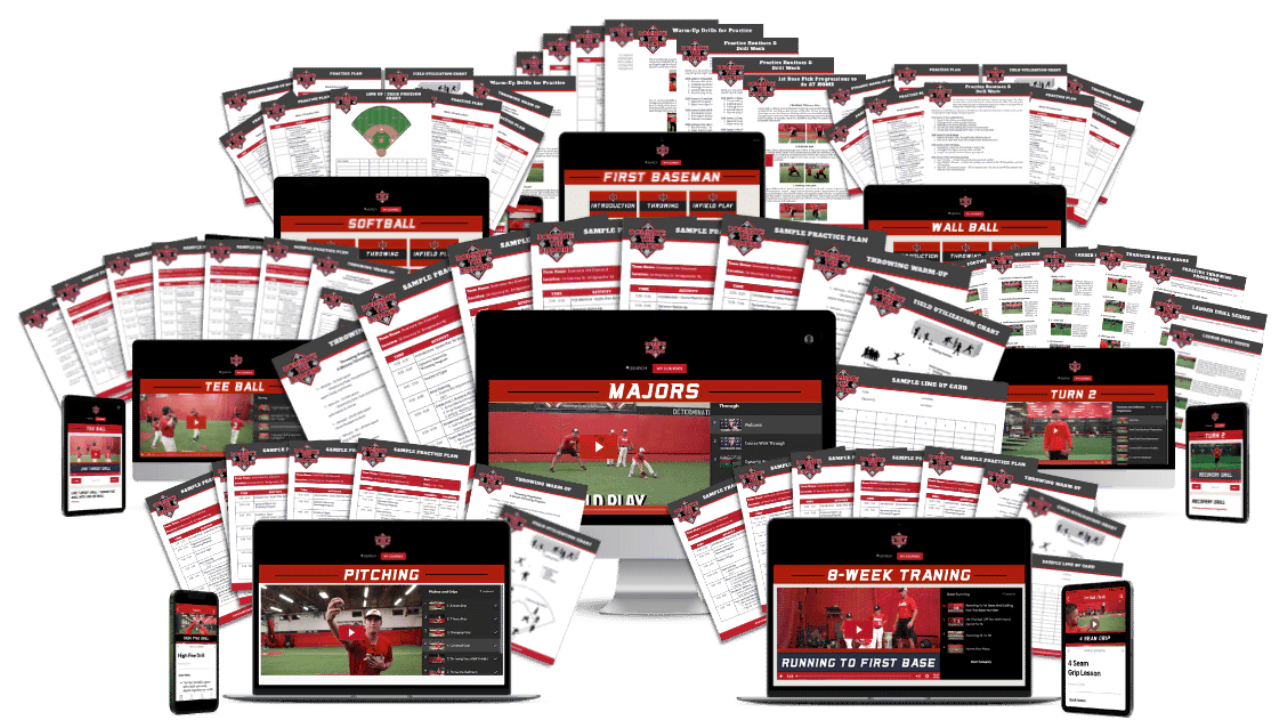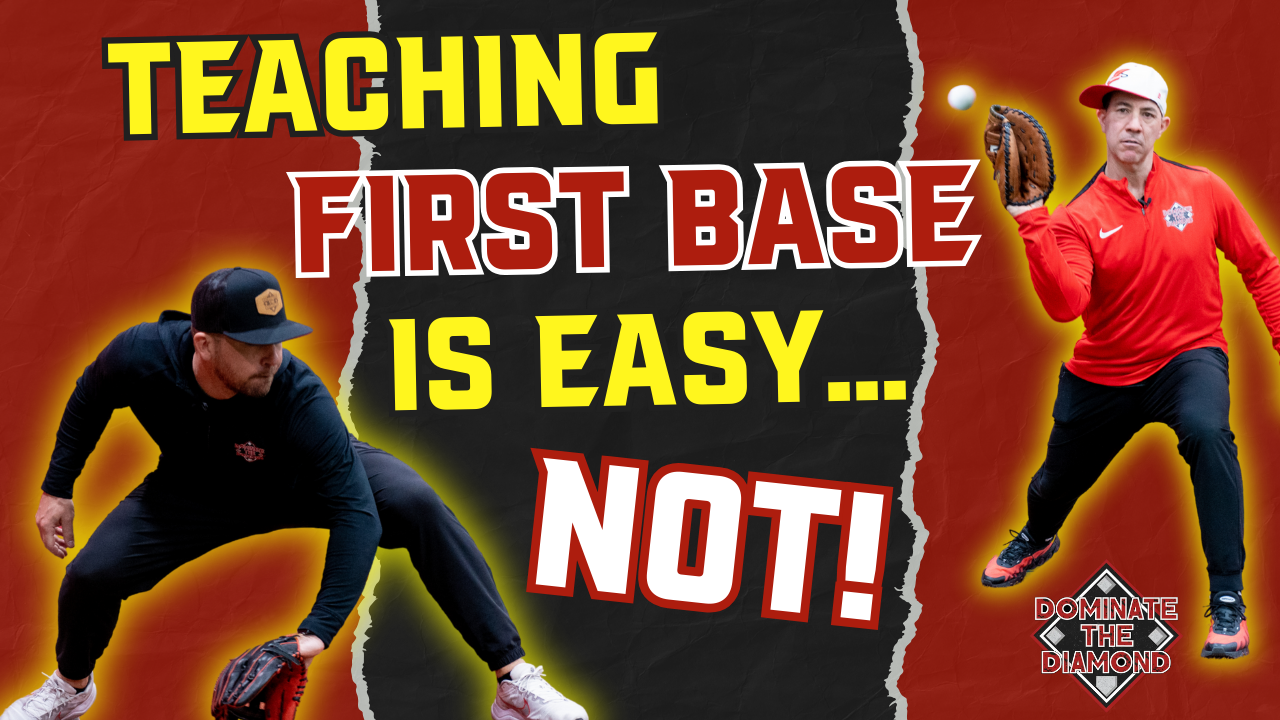5 Effective Ways to Implement Station-Based Training in Your Youth Baseball Practice

Another practice rolls around, and as a youth baseball coach, you’re constantly moving among your players, instructing and observing. You've planned today's drills with great thought and care, yet you notice that the sparkle of excitement that once lit up your players' eyes is dimming. The routine has grown too familiar, too predictable. Kids start fidgeting, looking off into the distance, even goofing off more than usual. It's clear they love baseball, but the repetitiveness of practice isn't engaging them as it should.
This is the moment you realize it's time for a change. It’s time for you to start station-based training. It's a strategy that doesn’t just shake up the routine—it completely revitalizes it. By dividing your practice into focused, skill-specific stations, each player is met with a new challenge at every turn. Imagine, your field buzzing with activity, each player eager and fully engaged in improving their skills.
It’s time for you to breathe new life into your practices! Here’s how station-based training can transform your coaching and reignite your team's passion for the game.
Design Purposeful Stations
When planning your youth baseball practices, consider setting up stations where each focuses on a different fundamental skill.
Examples of skill-based stations:
Hitting Station: Here, players can practice different swings for various pitches, honing their batting technique.
Pitching Station: Set up targets for accuracy to help pitchers work on their control and precision.
Fielding Station: Incorporate drills for ground balls and fly balls to improve defensive skills.
Base Running Station: Include timed sprints or sliding practices to enhance speed and agility on the bases.

This approach ensures every aspect of baseball is covered, providing your players with a well-rounded skill set.
Consider integrating these drills in your hitting stations:
Tee Hitting Drill: This involves players hitting balls off a tee, allowing them to focus on their swing mechanics without the variability of pitched balls.
Side Toss Drill: A coach or another player tosses the ball from the side, helping the hitter work on timing and rhythm with a moving ball.
Hand-Eye Coordination and Balance Drill: Players hit balls tossed to their side, improving their ability to handle pitches from different angles.
Short Hops Drill: While typically a defensive drill, incorporating it at the hitting station emphasizes quick reflexes and adaptability.
Organize Small Groups
Creating small groups in your youth baseball practices is crucial, especially when coaching players under 12 years old. Smaller groups allow for more personalized coaching, helping maintain each player’s interest and enthusiasm throughout the session.
Why Small Groups Work
Small groups are particularly effective for young players because they ensure more frequent interaction between the coach and each player. With about 12 players per team and at least two coaches available, it's feasible to keep group sizes small, ensuring each child gets ample attention. This setup is not just about skill development; it's about engaging players and enhancing their learning experience.
Mixing Skill Levels
While grouping children by skill level has its benefits, doing so consistently may lead to feelings of insecurity among less skilled players. To foster a supportive and inclusive environment, try to vary the groupings in each practice, making them appear random. This approach helps encourage peer learning, builds team cohesion, and boosts confidence by giving every player a chance to be a leader.
Structuring Self-Directed Stations
Considering not all stations can have a coach, design some to be self-directed. These should be safe and simple enough for kids to carry out on their own or with minimal supervision. For example:
Examples of self-directed stations:
Solo Batting Tee Practice: Set up a batting tee with clear instructions on stance, swing, and follow-through.

Ground Ball and Fly Ball Drills: Players pair up to throw ground balls and fly balls to each other, focusing on catching and proper throwing techniques.
Rotate On a Set Time
Keep the momentum going by rotating stations every 10-15 minutes. This keeps the practice lively and prevents any one drill from becoming monotonous. It’s like a quick refresh that helps players reset and tackle the next challenge with renewed vigor. Plus, it's a great way to manage time effectively, ensuring that all players have a go at each station without feeling rushed.
Benefits of Regular Rotation
Maintains High Energy Levels: Short, timed sessions at each station help maintain high energy levels. Kids have limited attention spans, and frequent changes in activity can keep them engaged and focused.
Ensures Balanced Skill Development: By rotating through stations, every player gets equal time to work on different aspects of the game, from batting to fielding to pitching. This balanced approach is crucial for developing well-rounded players.
Prevents Overtraining: Regular rotation helps prevent fatigue and overtraining in specific muscle groups, which can be a risk if players spend too long at one activity, especially in physically demanding stations like pitching.
Implementing Effective Rotation Strategies
Set a Timer: Use a timer to keep transitions smooth and consistent. Depending on the age and skill level of the players, each station should last about 10-15 minutes. This timeframe keeps activities short enough to hold players’ interest but long enough to allow meaningful skill development.
Clear Instructions for Transitions: Make sure all players and coaches know the rotation schedule and what they are expected to do at each station. Clear instructions and knowing what comes next can reduce downtime and confusion during transitions.
Immediate Engagement: Plan for each station to have an activity ready to go as soon as players arrive. This immediate engagement is key to keeping up the pace of practice and ensuring that no time is wasted.
By focusing on regular and effective rotation, coaches can create a dynamic practice environment that fosters skill development, enthusiasm, and a love for the game among young baseball players. This approach ensures that practice sessions are not only productive but also enjoyable, keeping players motivated and eager to improve.
Vary the Drills
To keep things interesting, switch up the drills at each station every few practices. For example, if you’re working on hitting, one session could focus on hitting off tees, the next could be about mastering bunting, and another could involve hitting live pitches. Changing the drills not only keeps the interest alive but also challenges the players to adapt and learn new skills, keeping their development holistic. Additionally, consider soliciting feedback from your players about which drills they find most effective and enjoyable. Adapting your practice plans based on this feedback can further tailor the learning experience to meet the needs and preferences of your team, ensuring that each practice remains engaging and productive.
Add Some Fun Competition
Everyone loves a little competition—it’s the nature of sports! Spice up stations with small challenges. Maybe have a contest at the fielding station to see which group can make the most accurate throws, or time the base runners and reward the fastest sprint. These mini-competitions encourage players to give their best, fostering a healthy competitive spirit within the practice.

Adding these competitive elements not only motivates players but also provides a fun way to assess skills under a bit of pressure, similar to game situations. For example, at the hitting station, you could set up a points system where players earn points for hitting targets placed at strategic locations. This not only improves their aiming skills but also adds an element of fun and urgency to the practice.
Another great competition is a pitching accuracy challenge where pitchers try to hit various targets around the strike zone. This can be turned into a friendly competition among pitchers, helping them hone their accuracy and control while enjoying the camaraderie of the challenge.
You can also incorporate team-based competitions, such as relay races that combine different skills like throwing, catching, and running. This type of competition not only builds individual skills but also enhances team coordination and spirit. It’s important that these competitions emphasize teamwork and collective success rather than just individual performance.
Lastly, always conclude competitions with positive reinforcement, highlighting not only the winners but also recognizing significant improvements and efforts from all participants. This ensures that the competitive spirit remains positive and inclusive, contributing to overall team morale and enthusiasm for the sport.
By weaving these competitive elements into practice sessions, you create an environment that mimics the excitement and challenge of actual games. This approach not only keeps practice lively but also instills a sense of achievement and progress among young athletes, making each session something they look forward to.
The Key to Stress-Free Practices
Station-based training is more than just a coaching strategy; it’s a way to make baseball practice a highlight for young athletes. By keeping sessions engaging, varied, and inclusive, you help develop skilled players who love the game and are excited to come to practice. Try these tips, see the difference they make, and watch your team’s enthusiasm and skill level soar.
Looking for some pre-made practice plans with stations already planned for you? Check out our Pre-Made Practice Plans here.









